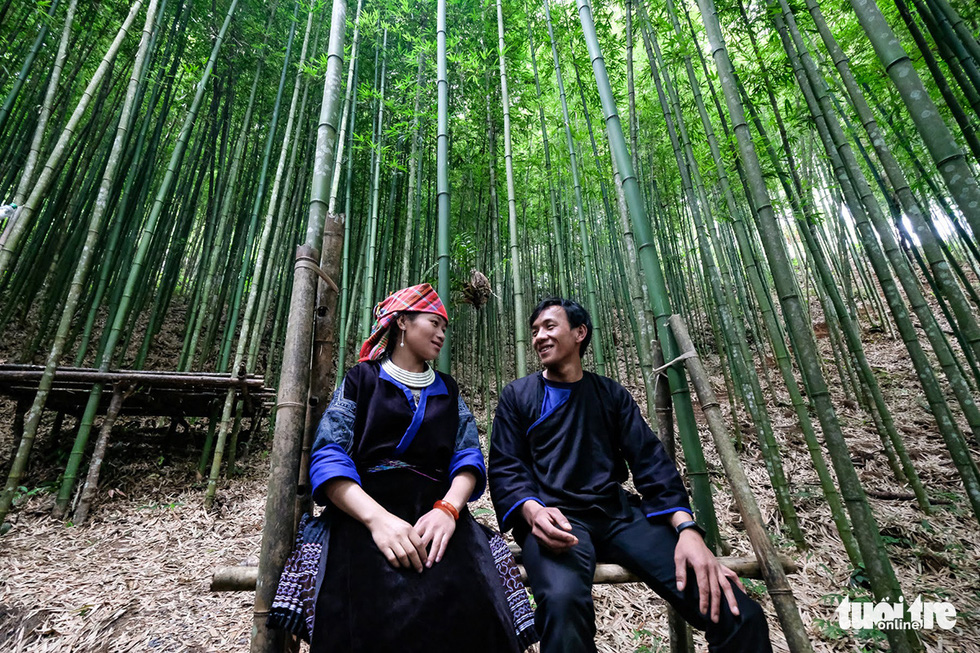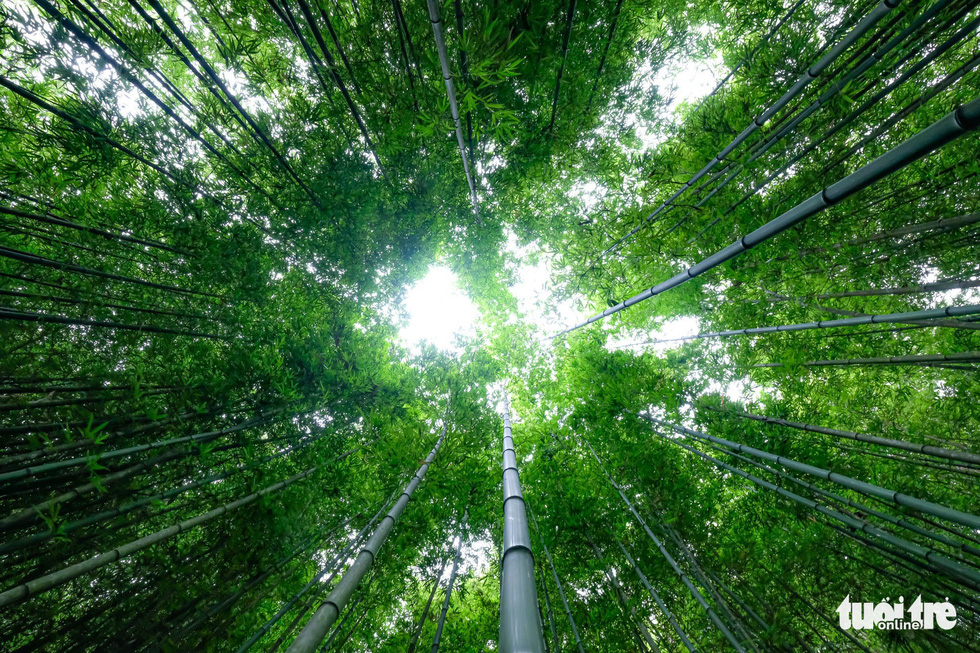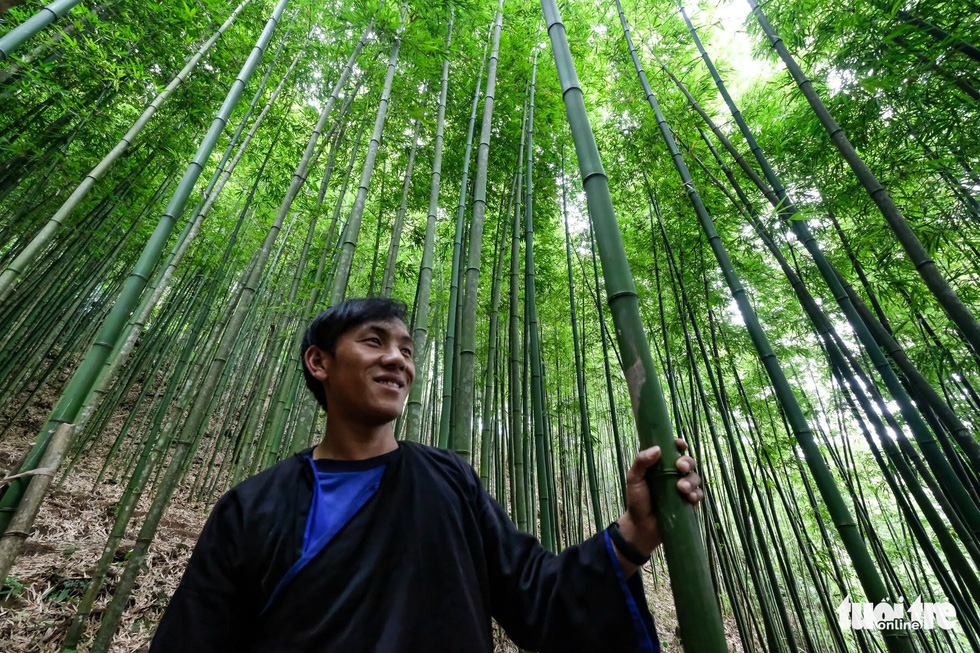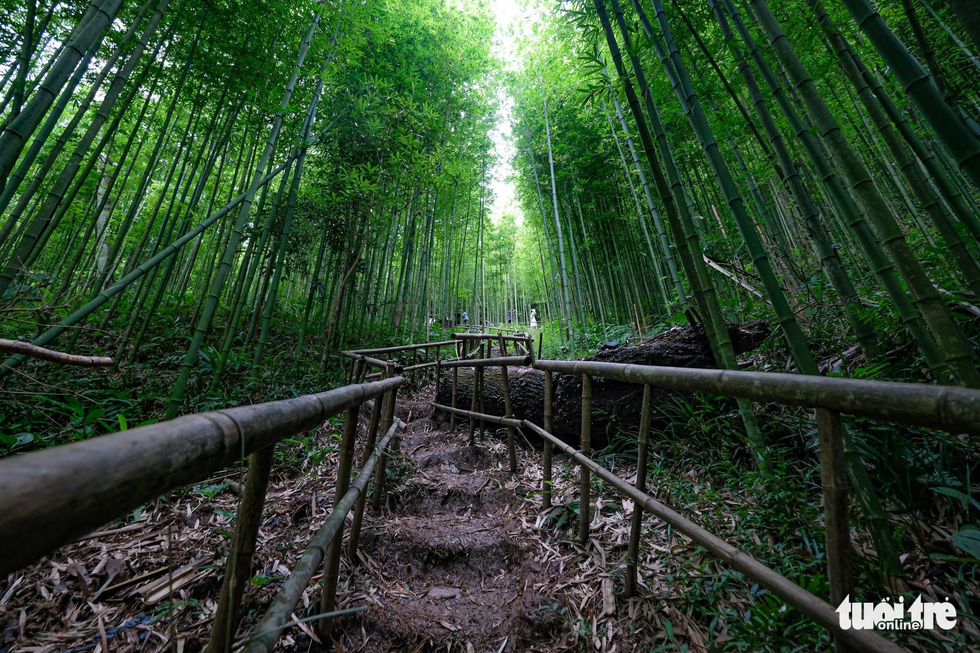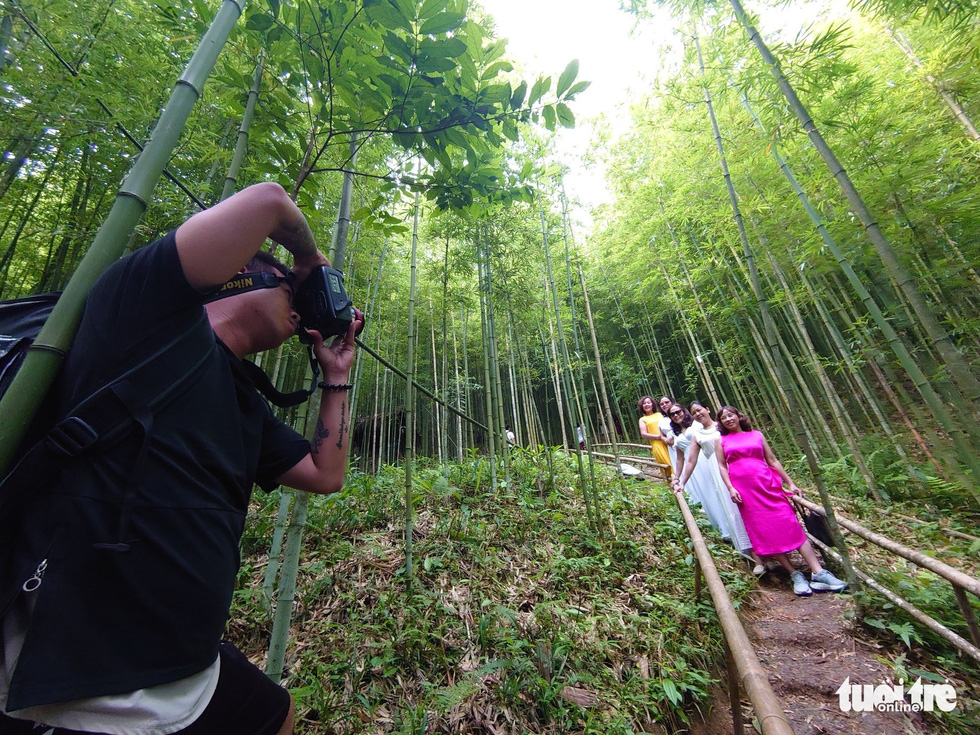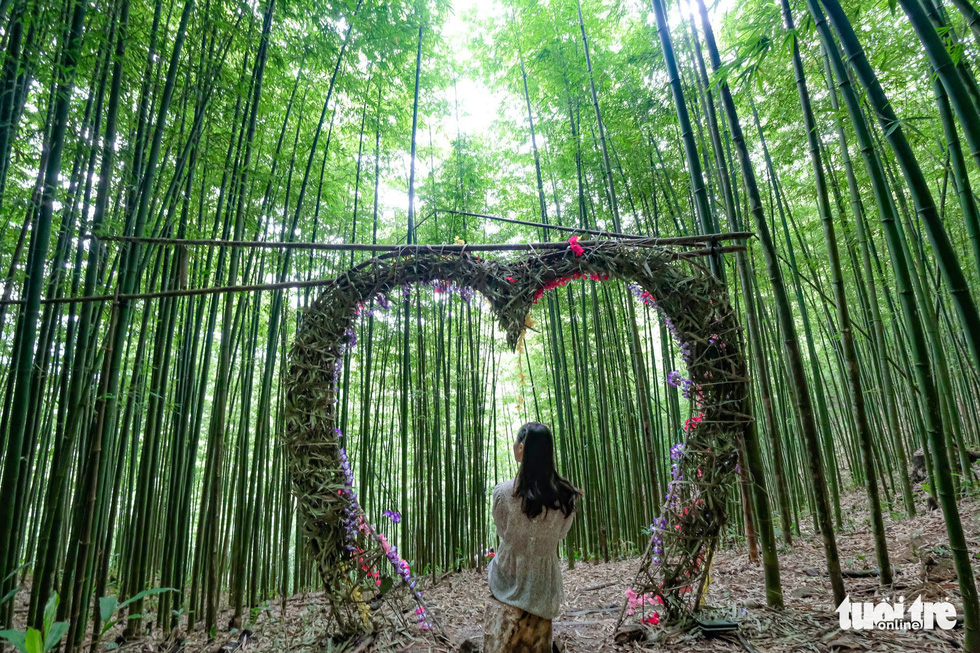During the early days of the Year of the Buffalo, residents of Na Hang Tua Chu, a mountainous village of Mu Cang Chai District in Vietnam's Yen Bai Province, were excited to welcome the very first tourists coming to their hometown.
On a concrete road leading to the village, a group of youngsters stood with their motorbikes, waiting to offer guests a ride to visit the villagers’ pride – a fairylike bamboo forest.
“Parts of our identity have been nurtured by forests," 27-year-old Lu A Tru, a Hmong ethnic, said about the motivation behind the village’s effort to plant the forest.
"By protecting them, we reserve what makes us ourselves."
|
|
| The bamboo forest in Mu Cang Chai District of Yen Bai Province, Vietnam was first planted some six decades ago. Photo: Nam Tran / Tuoi Tre |
The evergreen forest, planted some 60 years ago, stretched over an area of one hectare.
“Deforestation has to be ended," Tru affirmed.
"Elsewhere, bamboo forests are promoted to be tourism attractions.
"Why can’t ours?”
|
|
| Lu A Tru stands in Na Hang Tua Chu Village’s proud bamboo forest. Photo: Nam Tran / Tuoi Tre |
Motivated by the thought, Tru called the village’s youngsters to join hands forming a cooperative.
Their vision was to develop a new livelihood for locals while preserving the bamboo forest.
Tru and his teammates built walking lanes and stairs for tourists to access the forest easier.
Swings, shacks, and tea tables were also made for them to rest and enjoy nature in the woods.
The cooperative pays attention to specific details.
Several trash bins are placed along the lanes with friendly reminders of not indiscriminately littering and not climbing up young bamboo plants.
Despite being young, Tru has earned respect from his fellow villagers.
Since high school graduation, his life has been attached to the paddy fields and maize farms.
The man credits his success and motivation to the fact that he abstains from drinking and gambling.
“It makes no good for my family,” said Tru.
|
|
| A tiny lane built inside the bamboo forest in Na Hang Tua Chu Village. Photo: Nam Tran / Tuoi Tre |
In 2019, Tru was elected by locals to be the village Communist party cell’s secretary. With the power and responsibility in his hands, along with the other three representatives, Tru laid out a vision to build up a local tourism model.
The road leading to the forest was built in just a day, with the help of villagers. Shacks, tables, and chairs were also made by the locals.
“Since the bamboo forest was opened to the public, we have tightened management over it," he said.
"Touring around the forest, we introduce guests to its history.
"We hope our efforts can leave a legacy for our children to follow.”
|
|
| A group of tourists take photos in the bamboo forest in Na Hang Tua Chu Village. Photo: Nam Tran / Tuoi Tre |
Villagers are encouraged to sell their homemade specialties, corn, sweet potato, and cassava for tourists as an approach to bring local products closer to potential consumers.
“I stay in the forest the whole day. The more tourists come to visit, the merrier,” Tru said.
“Seeing locals earning new, stable livelihoods makes me happy and eager to do more."
On peak days, during Tet – Vietnamese Lunar New Year, for example, each household can earn up to VND1 million (US$44).
|
|
| A visitor takes a rest in the bamboo forest. Photo: Nam Tran / Tuoi Tre |
Like us on Facebook or follow us on Twitter to get the latest news about Vietnam!



